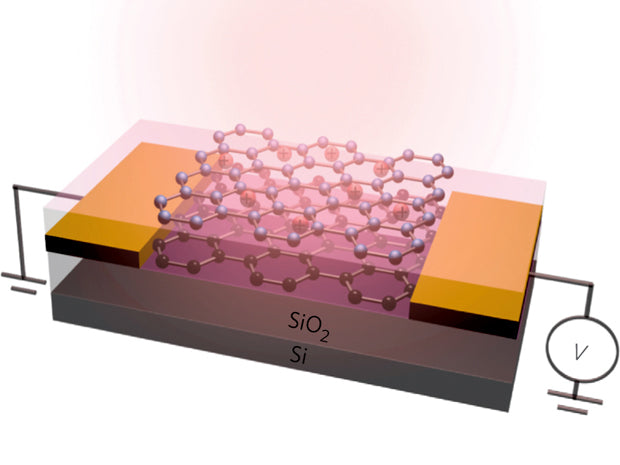Graphene on the human body
As graphene inches its way out of the lab and into production, old applications are being perfected and new ones invented. The research and product landscape keeps evolving and the community of interested parties seems to be rapidly expanding. To contribute our knowledge to the community, we wrote an article for Industrial Minerals - “The many ways of making graphene”. In their own words, “Industrial Minerals is a market leading resource for in-depth non-metallic minerals intelligence. Industrial Minerals offers comprehensive global coverage of all relevant news affecting the supply, logistics and demand of industrial minerals. Industrial Minerals covers over 70 minerals.” Our article explains to the IM community that graphene has many variants, all of which are good for a specific purpose, but all of which are made with different methods.
In research, the possibility of infrared-vision contact lenses enabled by graphene aroused public interest with a publication from the University of Michigan. The real breakthrough in that research is the use of a novel method to increase the photosensitivity of graphene. Instead of using the photothermal effect or other more common procedures for detecting light with graphene (all of which have a rather weak sensitivity to light), the researchers moved to a new paradigm, by employing two sheets of graphene spaced by a thin insulating layer. The bottom sheet of graphene senses the photo-excited charge carriers in the top sheet. With this method, the sensitivity of broadband graphene photodetectors was improved by two orders of magnitude.

Figure: Highly sensitive broadband graphene photodetector. University of Michigan.
A new type of strong and flexible yarn made from graphene oxide that could be ideal in “smart” wearable textiles has been developed by researchers in Australia and Ireland. In addition to being strong and highly conducting, the yarn has the highest ever capacitance reported to date for such a graphene-based structure. Smart clothing is clothing with embedded electronics such as processors, sensors, or LEDs, often used to enhance human perception. Smart clothing can, for example, be anything from running shoes that send data about your run to your smartphone, to a futuristic “thought helmet”. Graphene, being both conductive, flexible, and integrable with other materials, seems a logical material for “smart” clothes.
If all recent discoveries make it to the market in due time, it seems that graphene will be not only in every home – but also in every body. Recent research, published in ACS Nano, portrays targeted drug delivery using graphene oxide (GO). Drugs that deliver medication only to the place it's needed should reduce many undesired side effects of common drugs. The team, based in the University of Pittsburgh, experimented with GO buried in a conducting polymer. The compound was deposited on top of an electrode and loaded with an anti-inflammatory agent. The medication was successfully released by providing voltage on the electrode, and the dosage could even be controlled by voltage regulation. The authors think that their approach could be useful for treatment of epilepsy, with the drug triggering on electrical signals released during a seizure.
On April 1st and 2nd we'll stay tuned to Graphene LIVE! Europe 2014 in Berlin, an international conference and tradeshow covering the applications and latest technology developments of graphene. On the first day, Graphenea CEO Jesus de la Fuente will give a presentation entitled “Graphene Market Opportunities in Energy Storage Applications”, including the current situation and forecasts of the graphene market, graphene for energy applications, graphene in Li-ion battery electrodes, supercapacitors, and in redox flow batteries. See you there!
